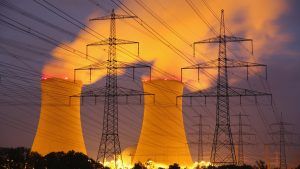Richard Rhodes in Market Watch:
 Some environmentalists believe countries should somehow rely on renewables alone to increase their energy supply. Renewables — primarily wind and solar — certainly have a place in the mix, especially locally and at small scale. But because larger-scale renewable sources are dispersed and dilute, they’re limited to favorable conditions, and since they’re intermittent, they require backup energy generation to fill in when the wind doesn’t blow or the sun doesn’t shine.
Some environmentalists believe countries should somehow rely on renewables alone to increase their energy supply. Renewables — primarily wind and solar — certainly have a place in the mix, especially locally and at small scale. But because larger-scale renewable sources are dispersed and dilute, they’re limited to favorable conditions, and since they’re intermittent, they require backup energy generation to fill in when the wind doesn’t blow or the sun doesn’t shine.
Which means the renewable system has to be supported by a supplemental load-following system, typically natural gas. “As more wind and solar generation capacity get added,” observes energy security specialist Jude Clemente, “even more natural gas capacity is added.” Clemente figures that “some 35 states will have natural gas as their main source of electricity by 2022.” Unfortunately, burning natural gas produces about half the volume of CO2 as coal burning, significantly reducing the effectiveness of renewables in limiting global warming.
Rather than choosing a favorite energy technology and trying to adapt societies to its quirks, it’s surely better to choose technologies that meet the demanding conditions both developed and developing countries will face as the world warms. Replacing fossil fuels with renewables is a red herring. The real and primary challenge is decarbonizing the energy supply.
More here.
